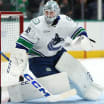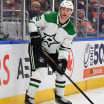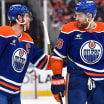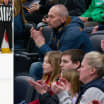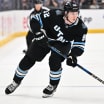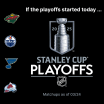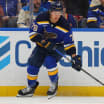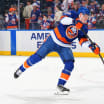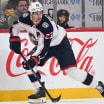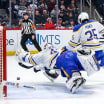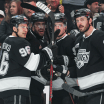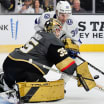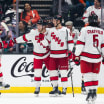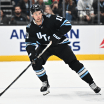Goaltending is an integral part of the Stanley Cup Playoffs. To better understand the strengths and weaknesses of each goalie, the last 100 goals allowed by each goalie in the regular season and every goal in the playoffs were charted, with the help of Apex Video Analysis and Save Review System from Upper Hand Inc., to see what patterns emerge.
Tuukka Rask vs. Jordan Binnington
Bruins, Blues will have tough time finding flaws in Cup Final goalies

© Getty Images
By
Kevin Woodley
NHL.com Independent Correspondent
It won't be easy finding flaws in the two goalies set to meet in the Stanley Cup Final between the Boston Bruins and St. Louis Blues, beginning Monday (8 p.m. ET; NBC, CBC, SN, TVAS).
The Bruins' Tuukka Rask has been the hottest goalie in the Stanley Cup Playoffs, with an NHL-leading .942 save percentage. He allowed five goals in four games in a sweep of the Carolina Hurricanes in the Eastern Conference Final.
RELATED: [Complete Bruins vs. Blues series coverage]
Jordan Binnington of the Blues is ninth among goalies who have played at least five postseason games with a .914 save percentage, but he allowed two goals in the final three games of the Western Conference Final against the San Jose Sharks. The 25-year-old rookie has played 52 combined NHL regular-season and playoff games, so there isn't a long history to study.
Of course, the Bruins may be better suited than previous Blues opponents to pick apart trends in Binnington's game after he spent last season on loan with Providence, Boston's American Hockey League affiliate, because St. Louis didn't have room with its AHL affiliates, which it shared with the Colorado Avalanche (San Antonio) and Vegas Golden Knights (Chicago). And as hot as Rask has been, keeping it up after having 10 days off between games before the Cup Final starts won't be easy even if he's worked to become less reliant on rhythm timing during his career.
Identifying how some of those past trends might manifest themselves could play a role in which goalie raises the Stanley Cup, so here is an in-depth look at each goalie's game:
Tuukka Rask, Boston Bruins
Rask's .912 save percentage in the regular season was his lowest since he became a full-time NHL player in 2009-10, but he also played 46 games, his fewest in a full NHL season since 2011-12. Boston coach Bruce Cassidy has cited rest for Rask's strong playoff performance, which includes shutouts in clinching wins against the Columbus Blue Jackets in Game 6 in the second round and against the Hurricanes in the conference final. It's hard to pick on anything when a goalie is playing as well as Rask has to date, and he's backed off some of the extremes that made him an easier target for past playoff pre-scouts, but there still are a few unique trends that stand out and could creep back in after a long break between games.
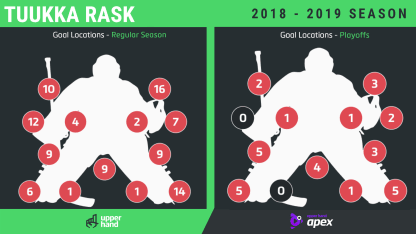
GOAL TRENDS
Traffic and tips: It's common for teams to talk about taking the eyes away from a hot goalie with traffic, and that trend holds true for Rask in the 2019 playoffs. Screens have played a role in 10 of the 32 goals he's allowed (31.3 percent), including two of five against the Hurricanes and five of 11 against the Blue Jackets. That's well above Rask's tracked total of 15 percent during the regular season and the 21.2 percent average tracked on more than 6,000 recorded goals for the past three years of this project. It includes screens that prevented him from seeing passes cleanly and delayed his movement on lateral plays.
Moving into shots:Screens also were a factor in six of 11 deflection goals, and part of another trend. Rask does a nice job battling for sight lines with a variety of methods but tends to push into shots laterally rather than dropping and reaching. It's a desirable trait but can catch him moving the wrong way on deflections, accounting for 11 goals-against (34.4 percent) in the playoffs. That's well above the average (20.3 percent) and Rask's regular-season totals (14 percent), but he allowed 22 percent of goals on deflections two seasons ago, and this trend was part of that.
What post-play problem:Rask modernized his post integration the past few seasons but still prefers to anchor himself on the post with the shin of his pad, giving him an optimal seal on the short-side post but reducing coverage along the ice and also delaying his exits off the post. Post integration and sharp-angled plays factored into seven goals through the first two rounds and 13 in the regular season but weren't a factor against Carolina, and the reality is Rask has allowed two goals off low-high plays from near or below the goal line in the playoffs after averaging 14 percent the past two regular seasons, below the 17.4 percent NHL average. It still may make sense to get a goalie who moves so well on his skates playing from his knees more with these plays, but as Hurricanes forward Sebastian Aho learned on a great low-high setup 9:36 into the conference final, Rask isn't stuck when he's on his posts.
Flat off the rush: Rask has done a good job of improving his lateral movement on end-zone play during his NHL career, taking some of the open-and-close delays out of his side-to-side movements, including a tendency to back into plays to his right. Last season, he got caught sliding across on his knees on lateral plays he used to beat on his skates, but it wasn't as noticeable this season. He is, however, still prone to his old backward flow patterns off the rush, including a tendency to retreat parallel to the goal line, something that can leave him not square to the shooter on plays down the wing. It accounted for some of his increase in clean-shot goals from 14 percent to 23 percent this season, and he's given up nine goals (28.1 percent) on clean shots when he had time to be set on the shooter. That includes Greg McKegg's sharp-angled shot for Carolina's second goal in Game 1 that went between his blocker arm and body, holes that open more when a goalie is not square.
Jordan Binnington, St. Louis Blues
Binnington got his first NHL start Jan. 7, almost eight years after being picked in the third round (No. 87) of the 2011 NHL Draft, made 25 saves in a 3-0 shutout of the Philadelphia Flyers, and never looked back. With a balanced style and 59 goals-against to break down after the regular season, there weren't a lot of obvious tendencies going into the playoffs, reminiscent of Matt Murray's first Stanley Cup run with the Pittsburgh Penguins in 2016. But a few trends have emerged through the first three rounds.

GOAL TRENDS
Rush him: Binnington gave up 33.9 percent of his goals off the rush during the regular season, below the 41.6 percent tracked NHL average for 2018-19, but that is up to 43.5 percent (20 goals) during the playoffs. Eight of those 20 came in the Western Conference Final against the Sharks, including seven of 12 goals in the first three games. Binnington sorted out rush chances well all season, and despite getting caught well outside his crease for the only goal he allowed in Game 6, he's typically been good at staying square and near the edges of his crease before stepping out when he reads an open shot. Boston will have a tougher time exploiting Binnington the way it did the more aggressive tendencies of Carolina goalies Petr Mrazek and Curtis McElhinney in the conference final, but it still will be important for the Blues to limit the Bruins' chances off the rush, especially with how well their top forwards move the puck laterally, often after first selling a shot. Binnington is patient and precise with his reads, but the outside-in move can leave him vulnerable to a late lateral pass just as he steps out on a shooter, something that contributed to the Sharks' first goal of the conference final after a great fake by Gustav Nyquist on a 2-on-1.
Low-high attacks:Sharp-angled shots and plays from near or below the goal line accounted for 18 of the 46 goals (39.1 percent) Binnington has allowed in the playoffs so far despite dropping to four of 14 (28.6 percent) against San Jose. Binnington hasn't had much help, with a lot of cross-ice backdoor plays and open shooters in high-danger areas after low-high pass-outs. But with his playoff total on these types of plays more than double the average (17.4 percent) and so few other weaknesses in his game, it understandably has gotten a lot of attention.
Post play: Binnington has varied his post-seal approach as the playoffs have gone on, mixing a variety of techniques and at times trying to stay more patient before committing to any of them. Still, delays getting off his posts make quick, far-side shots most effective on low-high passes, and a tendency to overlap his post on sharp-angled drives off the rush, starting with his short-side skate outside the post, make it tougher for him to push across on wraparounds.
Low not high:Binnington has great patience tracking open shot releases and doesn't default to his butterfly prematurely even from close range, with opponents shooting several great looks into the glove he's almost never lowered too soon during these playoffs. But there have been some open looks when he seemed to be anticipating high shots and was late to the ice, and his nine five-hole goals (19.6 percent) in the playoffs are well above his regular-season number (11.9 percent) and the tracked average (12.1 percent), so it will be interesting to see if Boston's skilled forwards try to look him off high and deliver quick, low shots instead.
--
Listen: Stanley Cup Final preview from NHL Fantasy on Ice podcast
